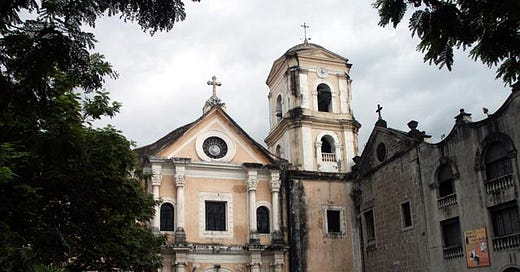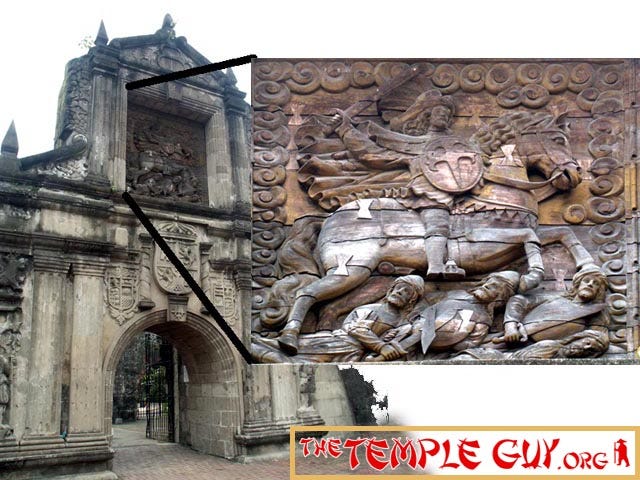I met my wife-to-be at Chinese New Year in 2005, and a few months later we headed for a visit to her hometown, Manila. After discharging the usual family responsibilities, we began exploring from our base in Malate, where we strolled past a fine 1864 Baroque-style church facing Manila Bay.
Manila's Intramuros
The gate over Fort Santiago has a wooden panel on which is carved an image of St. James killing Muslims
But as soon as possible, we headed for the jewel in the crown: Intramuros ("within the walls"). In the Spanish era, the district--walled off from other towns and suburbs--was the city of Manila (and the destination of the "Manila galleons" we learned about in grade school). Originally, the northern portion of Intramuros, Fort Santiago, stood on a promontory where the Pasig River debouched into Manila Bay. After land reclamation, it now stands a couple of kilometers from the Bay.





